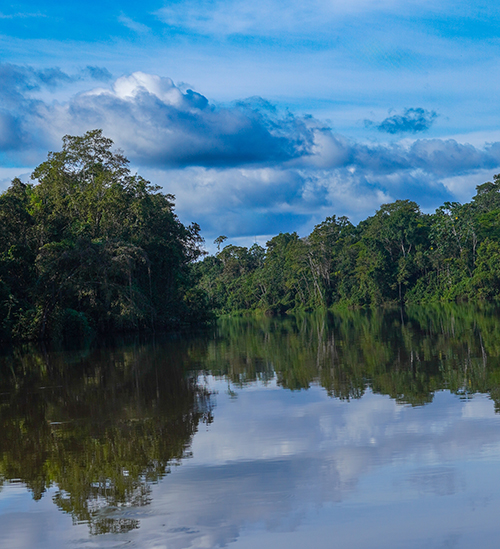The benefits of the Amazon transcend borders, but so do the challenges to ensure its conservation. One of the activities that most affects the Amazon forests and is widespread in many countries in the region is illegal mining.
This activity constitutes criminal ecosystems in border areas, linked to organized crime, human trafficking and contract killings, which have harmful effects on health, the environment, the economy and public safety.
Addressing this complex panorama requires a strategic regional vision because, as it is a transnational problem that has impacts throughout the region, it is necessary to coordinate efforts to confront it on a scale that cannot be achieved at the level of each country alone.
The project "Mitigation of Illegal Mining in the Amazon", an initiative of the Gordon and Betty Moore Foundation, seeks to reduce this environmental crime and its impact on priority biodiversity areas, conservation corridors and transboundary landscapes in Peru, Colombia and Brazil.
This initiative brings together the efforts of leading organizations in Peru, such as the Observatorio de Minería Ilegal (OMI), which brings together six entities specialized in environmental conservation and defense; and in Colombia, through the Alianza Regional Amazónica para la Reducción de los Impactos de la Minería de Oro (Alianza).
The Amazon
Vital for humanity
million km2 of forest
of known terrestrial biodiversity
of the planet's liquid fresh water
million inhabitants
Illegal mining expands in South America
The new hotspots in the region are concentrated in Peru, Colombia, Brazil, Bolivia and their border areas.
Objectives
The project has two main objectives, the first is to stop illegal mining in Peru in key geographical areas of the Amazon:
"By October 2025, measures are expected to be in place to curb illegal gold mining in priority biodiversity areas and conservation corridors in Loreto and Madre de Dios. This will be achieved through improved regulatory frameworks, strengthened control mechanisms to protect local communities and environmental defenders, better data and knowledge management, and increased visibility of the impacts of illegal mining."
The second objective is to address the problem of illegal mining in border areas, particularly in shared environmental components and in local communities located in transboundary areas:
"By October 2025, we seek to have national, subnational government agencies and communities respond effectively to the impacts of illegal alluvial gold mining in priority biodiversity areas and transboundary landscape conservation corridors in Peru, Colombia and Brazil through better information, institutional coordination and legal mechanisms."
The implementation of this objective is jointly executed by the Observatory of Illegal Mining (OMI) of Peru and the Alliance for the Reduction of Impacts of Gold Mining (Alianza) of Colombia.
Illegal mining in Peru
Environmental, economic and social impacts
hectares
million
of people
The project started in October 2023
In Peru, we focus our work in Loreto, Madre de Dios and its border areas, where the main centers of illegal mining and international gold smuggling are located.
Our work in Peru
Illegal gold mining currently affects all Amazonian regions of Peru. It is an environmental crime, as it does not comply with any standards required by law, is carried out in prohibited areas and/or with prohibited machinery, and uses polluting inputs such as mercury. It is therefore punishable by prison and will never be eligible for formalization.
This illegal activity has serious consequences for nature, as well as for the health, safety and future of the entire population. Combating and reducing it is a necessity that cannot be postponed.
In Peru we work with civil society organizations that make up the Observatory of Illegal Mining
: Fundación para la Conservación y el Desarrollo Sostenible (FCDS Perú), Conservación Amazónica (ACCA), Centro de Innovación Científica Amazónica (CINCIA), Frankfurt Zoological Society (SZF),
Conservation Strategy Fund (CSF) and Derecho, Ambiente y Recursos Naturales (DAR).
To date, the actions carried out within the framework of the project are based on the following themes and lines of work:











